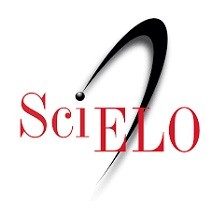
دانسیته مواد معدنی استخوان ران در جوجه مبتلا به دژنرسانس استخوان ران
چکیده
یک بررسی، در تاسیسات آزمایشگاهی FMVZ/UNESP-Botucatu، با هدف پیگیری رشد (توسعه) و شیوع دژنرسانس استخوان ران (FD) انجام شد. مجموعا 305 جوجه ی نر یک روزه در 6 لانه که اندازه ی هریک 5 متر مربع بود، قرار گرفتند. از یک طراحی آزمایش کاملا تصادفی، با 2 تیمار (T1: رژیم با دانسیته ی مواد مغذی معمول، T2: رژیم با دانسیته ی مواد مغذی بالا) که هر یک دارای 3 تکرار بودند، استفاده شد. سر استخوان ران جوجه ها در روزهای 0، 7، 14، 21، 28، 35 و 42 مورد بررسی با تست توده (gross examination) قرار گرفتند. در 42 روزگی، 60 پرنده (30 تا در هر تیمار) در بیمارستان دامپزشکی FMVZ، برای تعیین دانسیته ی معدنی استخوان ران، به وسیله ی رادیوگرافی، مورد بررسی قرار گرفتند. پرندگان سپس برای تست توده (gross examination) در پاها، و امتیاز بندی FD ذبح شدند. 5 پا، در هر تیمار در هریک از امتیازهای FD برای تعیین تمامیت سر استخوان ران و دانسیته ی مواد معدنی استخوان ران، با سی تی اسکن مورد بررسی قرار گرفتند. تیمارها، شیوع (بروز) FD را تحت تاثیر قرار نمی دادند، و اولین آسیب توده ی (gross) FD زمانی پدیدار شده بود که پرندگان 28 روزه بودند. بنابراین نتیجه گرفته می شود که دانسیتومتری نوری رادیوگرافیک و سی تی اسکن، روش های اثربخشی برای ارزیابی دژنرسانس استخوان ران می باشند، و هر دو تکنیک پروفایل مشابهی را نشان می دهند. به علاوه، با استفاده از دانسیتومتری (سنجش تراکم) نوری رادیوگرافیک و سی تی اسکن، این نتایج همچنین به ما اجازه می دهند که محدوده های مقدار دانسیته ی مواد معدنی استخوان را در هر امتیاز توده ی FD تعیین کنیم. این یافته ها ممکن است یک ابزار عالی غیر تهاجمی را برای توصیف دژنرسانس استخوان ران فراهم کنند.
SUMMARY
A study was carried out in the experimental facilities of FMVZ/UNESP-Botucatu, with the aim of following-up the development and the incidence of femoral degeneration (FD). A total of 305 one-day-old male broilers were housed in six pens of 5m2 each. A completely randomized experimental design, with 3 treatments (T1–traditional nutritional density diet; T2–high nutritional density diet) of 3 replicates each was applied. Femoral head of the broilers were submitted to gross examination at 0, 7, 14, 21, 28, 35, and 42 days of aged. At 42 days of age, 60 birds (30 per treatment) were submitted to the Veterinary Hospital of FMVZ to determine bone mineral density by radiography. Birds were then sacrificed for gross examination of the legs, and FD scoring. Five legs per treatment within each FD score were submitted to computed tomography for femur head integrity and bone mineral density. Treatments did not influence FD incidence, and the first gross FD lesions appeared when birds were 28 days old. It was concluded that radiographic optical densitometry and computed tomography are efficient methods to evaluate femoral degeneration, and both techniques expressed the same profile. In addition, using radiographic optical densitometry and computed tomography, these results also allowed us to establish bone mineral density value ranges within each gross FD score. These finding may provide an excellent non-invasive tool to describe femoral degeneration.
چکیده
مقدمه
مواد و روش ها
نتایج و بحث
SUMMARY
INTRODUCTION
MATERIAL AND METHOD
RESULTS AND DISCUSSION
- ترجمه فارسی مقاله با فرمت ورد (word) با قابلیت ویرایش، بدون آرم سایت ای ترجمه
- ترجمه فارسی مقاله با فرمت pdf، بدون آرم سایت ای ترجمه
